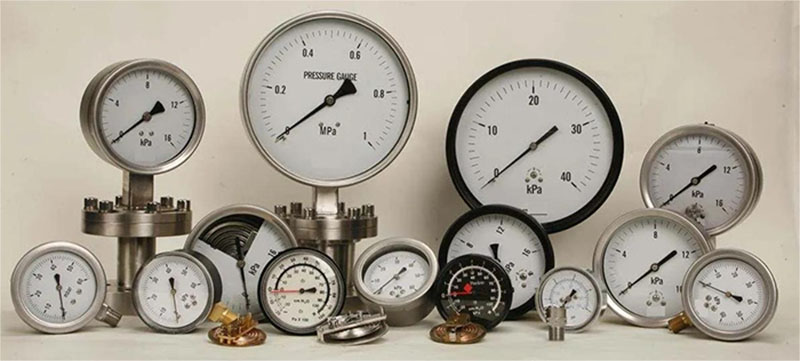How to Test a Hipot Tester?
Exports are rising, and China has established itself as a major industrial hub for electrical and technological goods. Along with consumer product safety, manufacturers are always enhancing product safety requirements in accordance with pertinent international laws and regulations. Additionally, before a product leaves the plant, it is thoroughly inspected for safety by the maker. The product's electrical function's safety, or perhaps its resistance to electric shock, is also a crucial component of the inspection.
The product's planning, construction, and insulation materials all have matching requirements or specifications that may be understood in order to comprehend how well the product insulates. Manufacturers typically employ a variety of inspection and testing techniques. However, a test is required for electrical products, and the electrical strength test can reveal whether the product performs well overall in terms of insulation.
Many different withstand hipot testers are available on the market right now. Manufacturers must increasingly prioritize cost-cutting in order to purchase practical withstand hipot testers for investments and internal purposes.
A test for voltage withstand (communication or DC)
According to the product, there are communication withstand hipot tests and DC withstand hipot tests for production lines' so-called ordinary test (Routine Test). The ability to flexibly select the test voltage type and the communication voltage frequency is the basic function of the withstand hipot tester because the communication withstand voltage test must take into account whether the frequency of the withstand voltage test is consistent with the operating frequency of the object under test.
A voltage test scale
The output voltage of a communication withstand voltage tester typically ranges from 3 kV to 5 kV to 10 kV to 20 kV or even higher, while the output voltage of a DC withstand voltage tester typically ranges from 5 kV to 6 kV or even more than 12 kV. How can the user select the appropriate voltage scale for his needs? There are appropriate safety rules for the test voltage of the product depending on the product category. For instance, withstand voltage test values for the withstand voltage test at operating temperature can be found in IEC 60335-1:2001 (GB 4706.1). Additionally, the test voltages are listed in IEC 60950-1:2001 (GB4943) for various insulation types.
The test voltage also varies depending on the product's kind and the accompanying parameters. However, some specialized testing organizations or manufacturers may need to employ 10kV and 20kV product communication or DC to deal with diverse product requirements. The general manufacturers typically pick 5kV and DC 6kV withstand voltage testers, which can essentially fulfill the needs. Therefore, another fundamental necessity of the withstand voltage tester is the capability of arbitrary output voltage adjustment.
Test period
A typical pressure resistance test, as per product requirements, lasts 60 seconds. This had to be done strictly in industrial laboratories and safety inspection facilities. However, at that time, doing such a test on the production line was practically impossible. The main emphasis was on productivity and production speed, and long-term testing did not satisfy real-world requirements. Thankfully, a lot of businesses now provide customers the choice between shorter test durations and greater test voltages. Some recent safety regulations include include test timing requirements. The routine test (Routine Test) time is 1sec, according to Appendix A of IEC 60335-1, IEC 60950-1, and other regulations. As a result, the withstand voltage tester also has a function for setting the test time.
The voltage slow rising feature
Many safety regulations, like IEC60950-1, list the following as the test voltage's output characteristics: According to IEC60335-1, "The test voltage applied to the insulation under test shall be gradually increased from zero to the normal voltage value. "At the start of the experiment, the applied voltage shall not be greater than half of the normal voltage value, and shall be gradually increased to the full amount." Similar requirements exist in other safety laws, such as the need for a steady rise in voltage rather than an abrupt addition to the object being tested.Although the standards do not specifically describe the amount of time needed for this gradual rise, the goal is to avoid abrupt changes. The insulating function of the test object may be harmed by high voltage.
We are aware that the withstand voltage test should not be a means of determining if a product is defect-free. Therefore, a gradual rise function is required for the pressure resistance tester. Of course, the device should be able to stop the output instantly if irregularities are discovered during the slow climb, allowing the test combination to enhance the function.
Test current selection
We can see from the above requirements that the safety standards on the needs of the withstand voltage tester are given more precise requirements. The size of the leakage current measurement is an additional factor to take into account when selecting the withstand voltage tester, though. You must choose the experimental time, voltage, and current before beginning the experiment (leakage current limit). The market's available current withstands voltage tester uses the communication current as an example. Of course, the relative cost increases with the size of the leakage current measurement.
Welcome to ATO manufactory to get a hipot tester at a competitive price with good performance.

